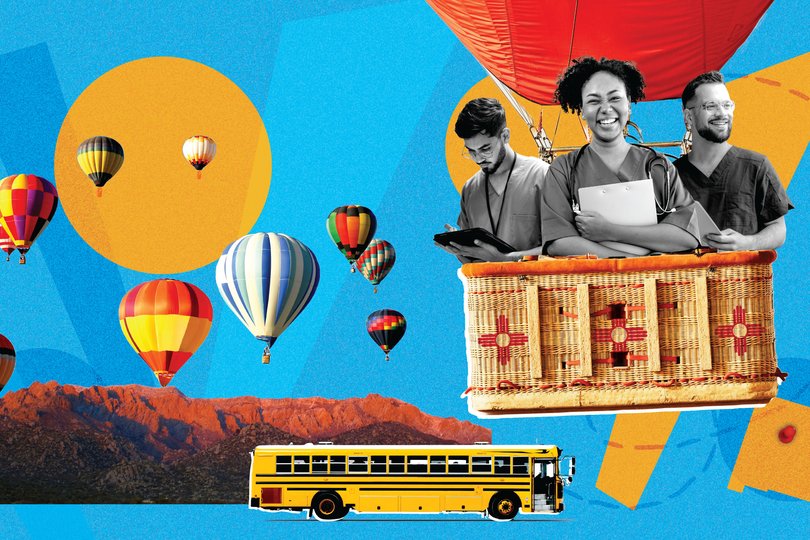How can education better prepare students for the workforce? And what are some community-driven models we could all learn from? In July, the Fordham Institute hosted a webinar that brought together three winners of Carnegie Corporation of New York’s Profiles in Collective Leadership initiative to explore these questions.
“People mostly hear about the challenges and barriers in education, and very little about what is going right and where it is going right,” said LaVerne Evans Srinivasan, vice president of Carnegie Corporation of New York’s National Program and program director for Education. “Where are positive things happening for young people? We wanted to learn more about opportunities and pathways to civic engagement and socioeconomic mobility across red, blue, and purple states.”
Profiles is a $200,000 award to 10 exemplary collaborations between local governments, educators, businesses, and nonprofits that boost socioeconomic mobility and civic engagement in their communities. The Fordham Institute webinar was co-moderated by Srinivasan along with Michael Petrilli, president of the Thomas B. Fordham Institute, who hosted the event, and Jade Grieve, chief of student pathways for NYC Public Schools.
“It's no longer about schooling happening here, college happens later, and then career success comes even later,” said Grieve, who oversees New York City’s expansion of career-connected learning, strengthening of college and career readiness, and computer science education. “That formula just doesn't work for most students.”
The featured speakers discussed how they are creating educational environments where students are connected to career opportunities — and are nurtured to become active, engaged members of society.
Four takeaways from the webinar:
Cross-sector collaboration must be personalized and diverse: Partnerships across fields like medicine, business, and technology meet specific community needs and enhance educational opportunities. For example, in a technology hub like California, education collaboratives such as the Anaheim Collaborative are leveraging alliances with relevant companies by integrating real-world technology like generative artificial intelligence tools and providing students with hands-on learning experiences directly related to current job markets.
Community alignment helps everyone: Collaboratives can meet local needs by involving community stakeholders in educational strategies. “There's no age too young to start thinking about what you might want to do,” said Andrea Russell of IU Health Fellowship with Indianapolis Public Schools. The IU Health High School Fellowship, a partnership between IU Health, Indiana Public Schools, local higher education institutions, and community leaders, has developed a health care-focused program that provides fellows with the opportunity to earn five industry recognized certifications. Graduates of the fellowship are guaranteed a job offer from IU Health and encouraged to continue postsecondary education.
High expectations are key: “One of the caveats of generational poverty is low expectations,” said Kim Alexander, founder of Collegiate Edu-Nation RURAL Hope. The partnership works to create a culture of high expectations for all students, where no student is treated differently due to their life circumstances and all students have options to move forward. Collegiate Edu-Nation’s pioneering Roscoe model integrates high schools that offer college and postsecondary classes for credits toward a degree or credential, called Early College High School, and STEM education in rural education settings. Their aim is to mitigate generational poverty through innovative schooling models.
Shared learning keeps the work alive: As Michael Matsuda, superintendent of Anaheim Union High School District, pointed out, “One of the big takeaways is for us to be able to share with other districts that are building these change infrastructures,” creating a cycle of inspiration and innovation.
“When things at the national level seem like they are broken and consensus is hard,” observed Fordham Institute’s Petrilli, “the best thing to do is to get out there into the real world, get outside the Beltway, and go find places on the ground where people are still doing great work, rolling up their sleeves, and getting things done.”
Watch the full webinar here. Learn more about the Profiles initiative here.
Angely Montilla is the program communications specialist for the Education Program and the Office of the President at Carnegie Corporation of New York.



